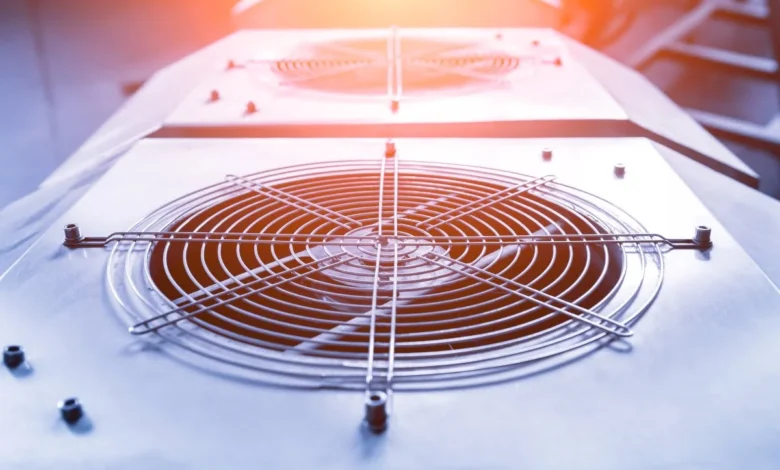Energy Leaks in Disguise: Unseen Factors That Undermine HVAC Efficiency

A perfectly functioning HVAC system can still be inefficient. Surprising? It shouldn’t be. Even the most advanced units can fall short of their performance potential if the environment around them is working against them.
Homeowners often point to aging equipment or dirty filters when their energy bills spike or rooms feel unevenly conditioned. While these are valid concerns, many forget to examine the silent culprits—air leaks, structural inefficiencies, outdated settings, and unnoticed wear that quietly drain system performance.
You may be scheduling regular AC repair in King County or system inspections, but if deeper issues go unaddressed, your comfort and costs will continue to fluctuate. Understanding the less obvious causes of HVAC inefficiency allows for smarter maintenance choices and better long-term results.
The Invisible Thieves: Where Efficiency Slips Away
HVAC systems don’t work in isolation. They depend on the structural integrity of your home to distribute conditioned air efficiently. Even the most powerful unit will underperform if air is leaking into the attic, out of unsealed duct joints, or through poorly insulated walls.
Here are some of the top hidden factors that affect efficiency—often without homeowners realizing it.
1. Leaky Ductwork
It’s estimated that homes can lose 20–30% of conditioned air through leaking ductwork. These leaks are especially common in older homes, where ducts have been patched repeatedly or shift over time.
The consequences?
- Uneven temperatures between rooms
- Longer run times for your heating and cooling system
- Higher energy bills despite consistent usage
An experienced HVAC contractor can run a duct pressure test to assess where energy is escaping. Sealing and insulating ducts—especially in unconditioned areas like basements or attics—can immediately boost performance without upgrading your unit.
2. Inadequate Insulation
Your HVAC system conditions air, but insulation holds it where it belongs. Without sufficient insulation in your walls, attic, and crawl spaces, that conditioned air seeps out, forcing your system to work harder.
Inadequate insulation can also allow outside temperatures to intrude, making it more difficult for the system to maintain a steady climate.
Insulation isn’t just for winter—it protects against summer heat infiltration too. If your system seems to be running longer in both cold and warm months, it may not be the unit—it might be your envelope.
3. Thermostat Placement
A poorly located thermostat may be reading incorrect temperatures, especially if it’s installed in direct sunlight, near a drafty door, or beside a window.
When the thermostat misreads the actual temperature, it causes your HVAC system to overcompensate. That means short cycling in summer or running too long in winter—both of which reduce efficiency and stress the equipment.
This simple oversight often goes uncorrected, even during heating repair or seasonal tune-ups. A repositioned or upgraded smart thermostat can dramatically improve system accuracy.
4. Poor Ventilation and Airflow Blockage
Many homeowners unknowingly place furniture or rugs in front of supply vents or block return vents with curtains or décor. Over time, this can reduce airflow, cause backpressure, and increase energy consumption.
Even partially blocked ducts create turbulence that forces the system to compensate. This contributes to wear and tear and decreased comfort.
Regularly walking through your home and ensuring that vents are unobstructed is a quick, free way to support your system’s function. And if airflow still feels off, it might be time for a professional duct balancing service.
5. Oversized or Undersized Units
Bigger isn’t always better. An oversized unit may heat or cool quickly, but it will cycle off before properly dehumidifying the space—leading to discomfort, mold risk, and frequent on/off wear. An undersized unit, meanwhile, runs constantly but never quite delivers comfort.
This mismatch leads to inefficiency and premature system failure. It also makes proper heat pump replacement or system upgrades more complex.
Before replacing any HVAC system, it’s important to have a load calculation performed to ensure the unit is properly sized for the home. This isn’t guesswork—it’s a mathematical assessment based on square footage, insulation, climate, and building design.
Behavioral Habits That Hurt Efficiency
Not all issues are structural. Homeowners sometimes unknowingly sabotage their own systems through small daily habits.
- Frequently adjusting the thermostat: Constant manual changes cause the system to recalibrate repeatedly, which strains components.
- Neglecting to change filters: Dirty filters restrict airflow, forcing the blower motor to work harder.
- Using “auto” mode incorrectly: Setting your fan to “on” instead of “auto” may keep air circulating, but also causes the system to run more than necessary.
- Ignoring minor issues: A humming sound, odd smell, or delayed response might seem minor—until they grow into larger, costlier problems.
Staying consistent with HVAC habits and scheduling timely maintenance visits can prevent most of these issues.
Seasonal Shifts, Long-Term Impacts
As the seasons change, so do the environmental factors that affect HVAC efficiency. Heatwaves, sudden cold snaps, and extended humidity put different pressures on your system.
Spring and fall offer an ideal window for system recalibration, minor AC repair, filter swaps, and insulation checks. Don’t wait until the peak of summer or the depths of winter to find out something’s wrong—be proactive.
A company like Pelican Heating & Air. supports this preventive mindset by encouraging system assessments before strain occurs, reducing emergency calls and extending the life of your investment.
Technology and Smart Solutions
Modern HVAC systems increasingly come with diagnostic features, zoning options, and connectivity tools that enhance efficiency. But if your home’s support systems—like ductwork and insulation—aren’t optimized, even smart systems can fall short.
Investing in smart thermostats, energy monitors, or humidity sensors can provide insights into where you’re losing efficiency. The data reveals not just how your system performs, but how your home supports it—or hinders it.
Final Thoughts
Efficiency isn’t just about the hardware—it’s about the environment the system operates in. Identifying and correcting the hidden factors that reduce performance is often more cost-effective than replacing the unit itself.
Before assuming your system is failing, look at the surrounding conditions. Ducts, insulation, vents, and even thermostat placement can quietly reduce effectiveness without setting off alarms.
With the right knowledge and professional guidance, you can restore balance, cut utility bills, and ensure your HVAC system performs the way it was designed to—all year round.




